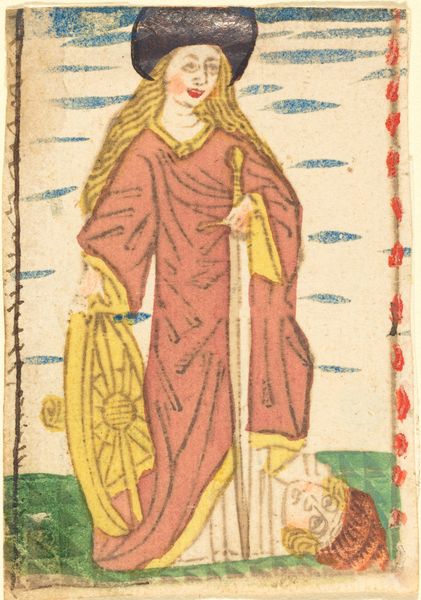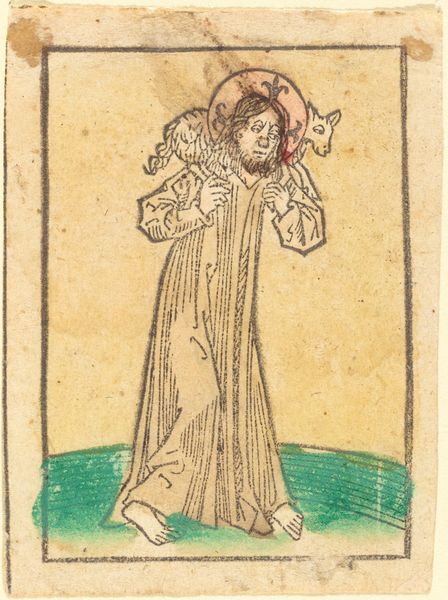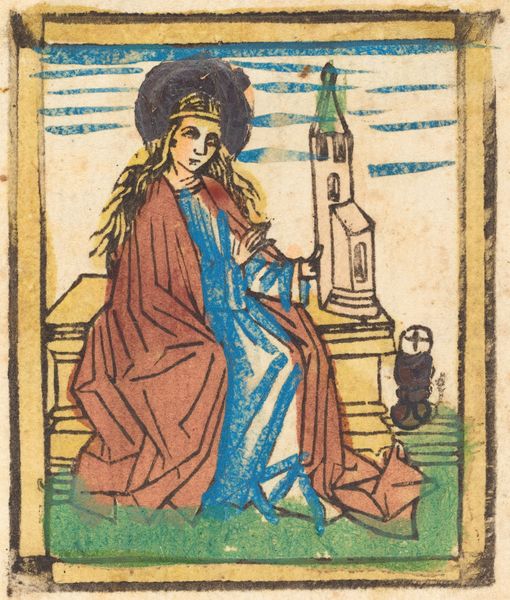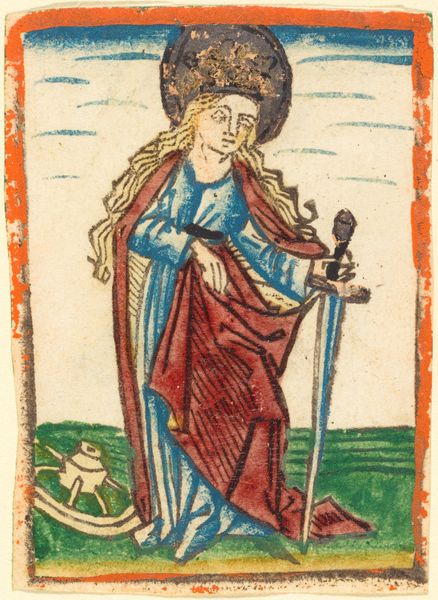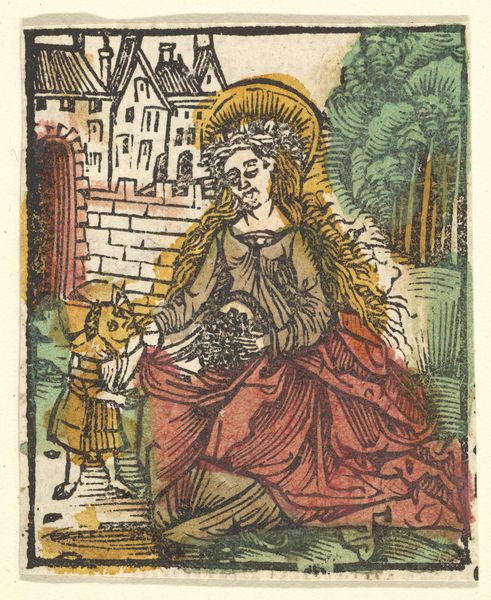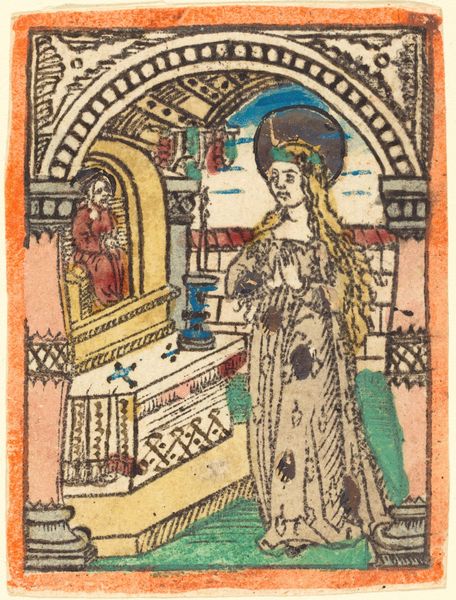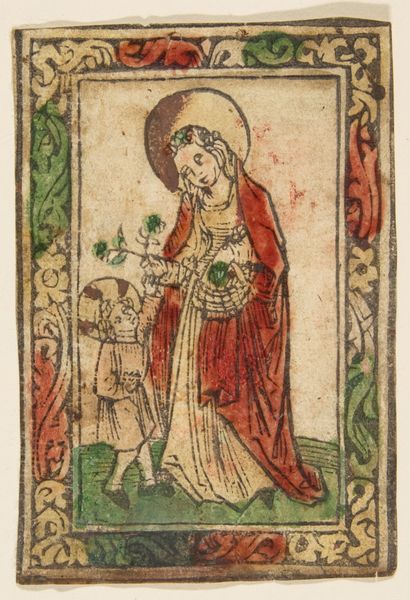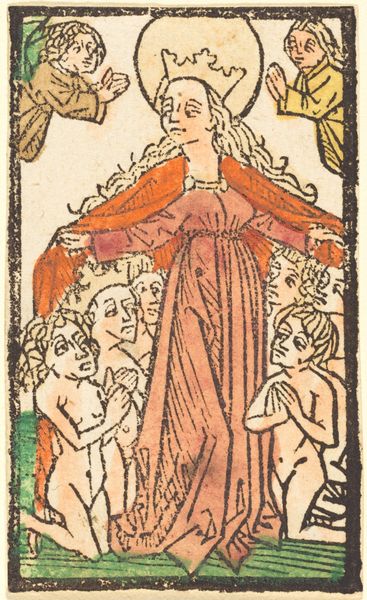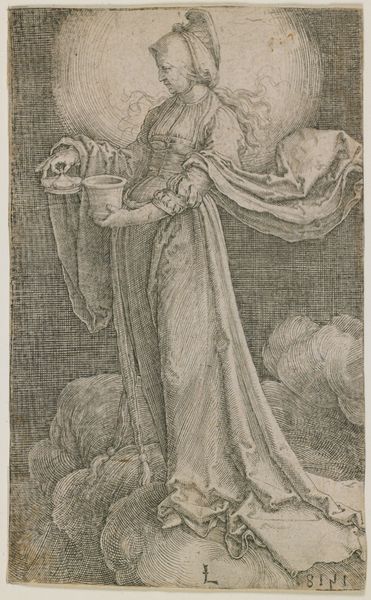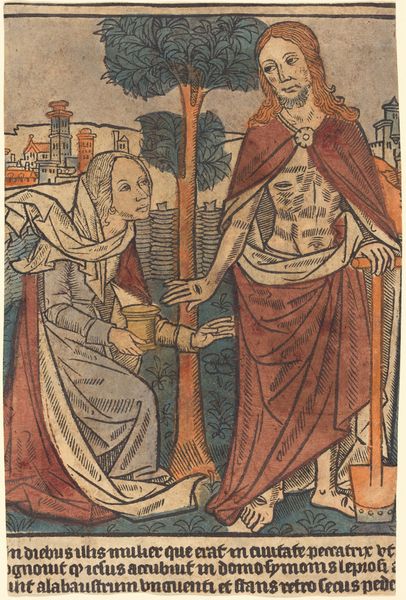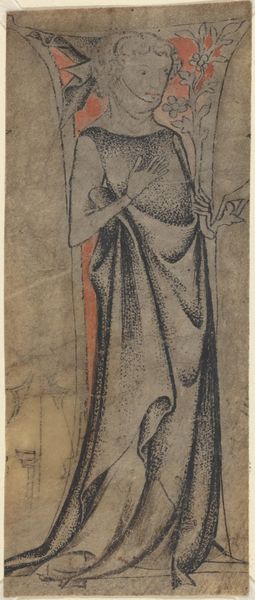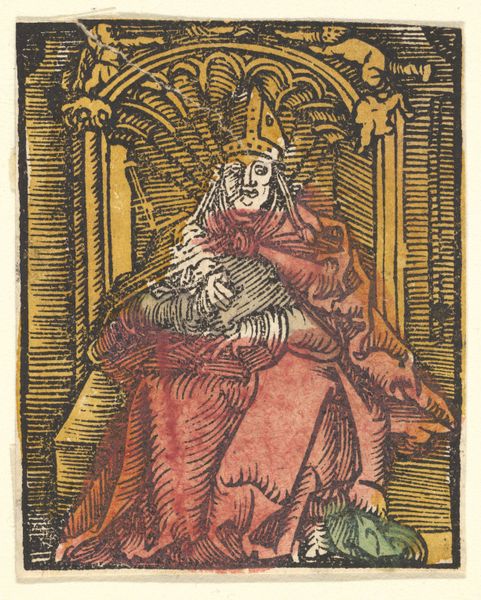
coloured-pencil, print
#
portrait
#
coloured-pencil
#
medieval
# print
#
figuration
#
coloured pencil
#
watercolour illustration
Copyright: National Gallery of Art: CC0 1.0
Curator: Looking at this small, hand-colored print, "Saint Agnes," dating from around 1450, I'm immediately struck by the delicacy of line and color. Editor: I am too. There’s an almost ethereal quality despite the roughness of the execution. It feels so tangible, though; I want to know about the paper it’s printed on and what the print-making process might have been. Curator: Precisely! The composition is quite stylized, typical of Medieval art. Note the slender, elongated figure and how the folds of her robes create vertical lines that draw the eye upwards. And consider the interplay of light and shadow to enhance the overall impact of serenity and otherworldly devotion. Editor: But it's not just the spiritual content. The artist, even if anonymous, had a practical knowledge of materials: how colored pencil blends and what the paper stock would allow. You can practically feel the artist’s hand guiding the color across the textured surface. It's a form of labor rendered visible and transformed. Curator: Yes, and we mustn’t forget the symbolic dimension! Saint Agnes, a virgin martyr, is traditionally represented with a lamb— a symbol of her innocence and purity. Here, the lamb almost seems to be pleading. And the palm frond she carries signifies her martyrdom. The work shows the use of conventional visual language from the medieval times. Editor: And while understanding those iconographic devices, one must consider that dyes and inks during that period came from very specific sources. The cost and availability of pigments were inextricably tied to social factors—global trade, access to local resources. This informed the selection of colors here and influenced who got to participate in image production and consumption. Curator: It speaks to the spiritual function of art then. How form serves to express and inspire faith. It is a piece meant to uplift. Editor: Indeed, seeing it through the lens of materials and processes allows us a connection with a workshop practice. This artwork shows labor transforming physical materials into culturally and religiously loaded artifacts. Curator: An image composed in such a specific visual rhetoric! Now I find my own spiritual outlook broadened through contemplation and knowledge. Editor: I agree. Thinking through the production allows us to expand our awareness of Medieval image making and material culture, thus enriching our response.
Comments
No comments
Be the first to comment and join the conversation on the ultimate creative platform.
